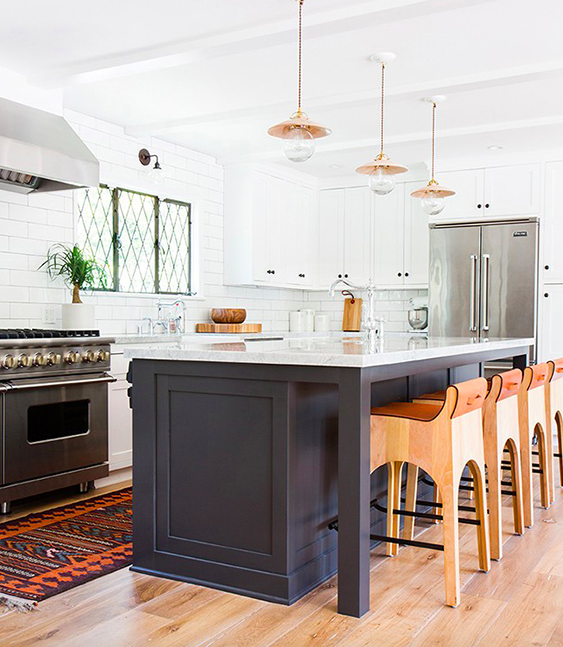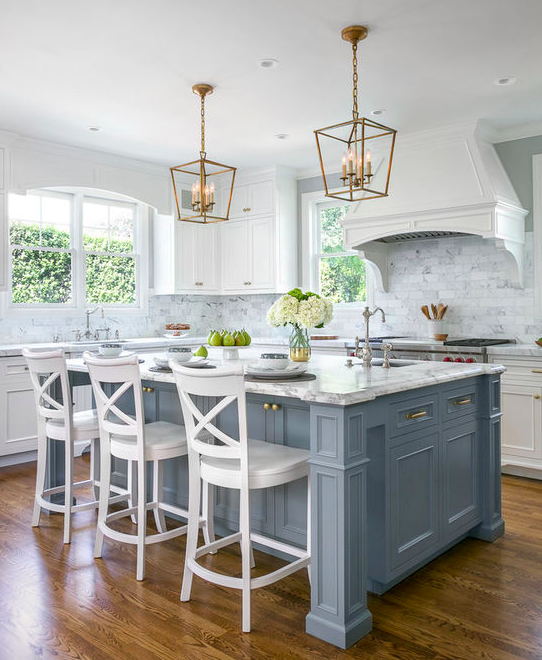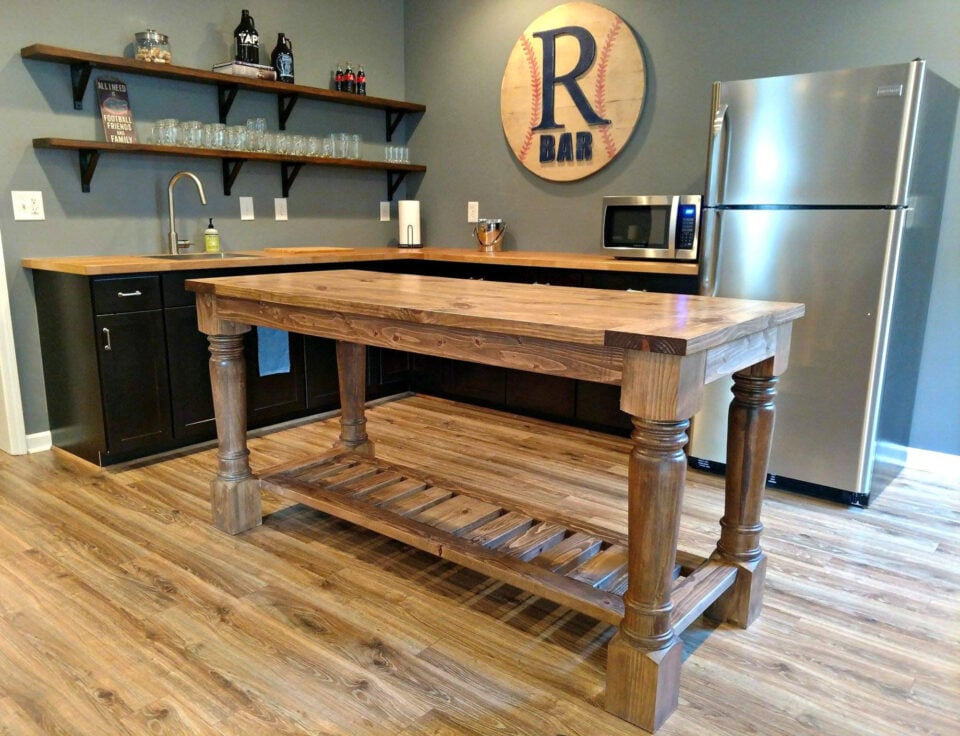Selecting the Perfect Kitchen Island Leg for Toughness and Functionality
Selecting the Perfect Kitchen Island Leg for Toughness and Functionality
Blog Article
Top Considerations When Picking a Cooking Area Island Leg for Modern Kitchen Interiors
In the realm of modern kitchen insides, the selection of a kitchen island leg is essential, affecting both visual appeals and functionality. Key considerations consist of the choice of materials that integrate with modern design, in addition to the leg's stability and assistance to ensure enduring performance. Additionally, elevation and percentages need to be attentively reviewed to maintain a cohesive appearance. As these components link, they raise even more inquiries about exactly how to attain the perfect balance in between style and functionality, leaving one to consider the ramifications of each decision on the total kitchen experience.
Product Options
When it pertains to selecting a kitchen island leg, product choices play an essential role in both aesthetics and performance. kitchen island leg. The most usual materials include wood, metal, and composite options, each offering possible downsides and unique benefits
Wood is preferred for its heat and traditional appeal, supplying a timeless appearance that enhances different cooking area styles. It is extremely flexible, permitting for customization in terms of shades and surfaces. Timber may require more maintenance to protect against warping or damage from dampness.
Metal, on the other hand, brings a commercial and modern-day panache to kitchen area islands. Stainless-steel and wrought iron are prominent options, understood for their longevity and resistance to wear. They can hold up against the roughness of everyday use but might lack the warmth connected with wood.
Composite materials, such as engineered wood or artificial blends, provide a balance in between rate, toughness, and looks. These options are frequently developed to imitate the appearance of all-natural products while providing resistance to spills and scratches.
Inevitably, the choice of product must straighten with the overall cooking area layout and planned usage, making sure that the kitchen area island leg is both aesthetically attractive and practical.
Design And Style
The design and layout of a kitchen area island leg considerably add to the general aesthetic of the room, matching the picked material. When selecting the leg layout, think about the architectural style of the cooking area. Streamlined, minimal legs made of stainless steel or acrylic harmonize with contemporary layouts, while ornate, turned timber legs improve conventional or farmhouse aesthetics.
Furthermore, the coating of the leg can affect the aesthetic impact; a polished chrome or matte black coating might stimulate modern style, while troubled wood talks with rustic charm. The leg's shape also plays a critical duty-- straight, angular types communicate a more industrial feeling, whereas tapered or curved legs introduce a softer, much more welcoming look.
Integrating attractive aspects, such as carvings or embellishments, can include character and character to the kitchen island, further improving its role as a prime focus. Ultimately, the selected leg style must not just straighten with the overall cooking area layout however also reflect the home owner's personal taste, ensuring that the kitchen island comes to be a practical and harmonious focal point within the modern kitchen area interior.
Height and Percentages
Attaining the right elevation and percentages for a kitchen island leg is vital for both performance and looks. Kitchen islands commonly vary in height from 28 to 36 inches, relying on their planned usage-- whether as a cooking surface, dining location, or work space. Standard counter top height is approximately 36 inches, making it crucial that the legs you pick enhance this elevation to give a smooth, integrated appearance.
Percentages likewise play a vital function in the visual balance of the kitchen. The size and weight of the leg need to be in consistency with the total style of the island - kitchen island leg. A slim leg may be appropriate for a minimalistic or modern island, use this link while an extra substantial leg might be required for rustic or traditional styles. Furthermore, consider the spacing in between the legs; appropriate range makes sure convenience and convenience of movement around the island.
When picking the elevation and proportions of the cooking area island leg, remember the overall design motif of your kitchen area. This interest to detail not only enhances the performance of the area yet likewise adds to a cohesive and visually appealing indoor design.
Stability and Support
Regularly ensuring security and assistance in kitchen island legs is necessary for both safety and capability. A sound kitchen area island must withstand daily use, consisting of weight from appliances, food prep work, and celebrations. The choice of legs must prioritize robust products and styles that can offer appropriate support.
When examining stability, consider the look at this site leg's product-- light weight aluminum, steel, or hardwood commonly use remarkable stamina contrasted to lighter alternatives. Additionally, the design needs to feature a broad base to distribute weight equally and decrease the danger of tottering or tipping. Legs created with an A-frame or cross-bracing can substantially enhance security.

Including these considerations will not just boost the overall safety and security of the kitchen area room but additionally boost the long life and performance of the cooking area island, making it a beneficial focal point in modern kitchen interiors.
Finishing Touches
When it pertains to finishing a cooking area island, thoughtful completing touches can substantially improve both its aesthetic appeal and functionality. Choosing the appropriate leg style is critical, however enhancing it with appropriate details can change the entire space. Take into consideration including attractive elements such as toe kicks or walls that match the cabinetry or floor covering to produce a seamless appearance.

Lastly, the option of coatings plays a pivotal function in tying the layout together. Whether opting for a matte, shiny, or textured coating, ensure that it aligns with the overall style of your kitchen area. A cohesive color combination and product selection will certainly raise the cooking area island, making it an exciting prime focus. By focusing on these completing touches, homeowners can develop a cooking area island that is both practical and lovely, providing to their way of living and style choices.
Verdict

In the realm of contemporary kitchen area interiors, the choice of a kitchen island leg is crucial, affecting both looks and capability.The style and layout of a kitchen area island leg substantially add to the total aesthetic of the area, complementing the chosen material.Attaining the right height and proportions for a cooking area island leg is essential for both performance and appearances.Constantly guaranteeing security and support in cooking area island legs is important for both safety and security and performance.In recap, picking a cooking area island leg for modern interiors calls for careful consideration of product options, design style, elevation, percentages, and security.
Report this page